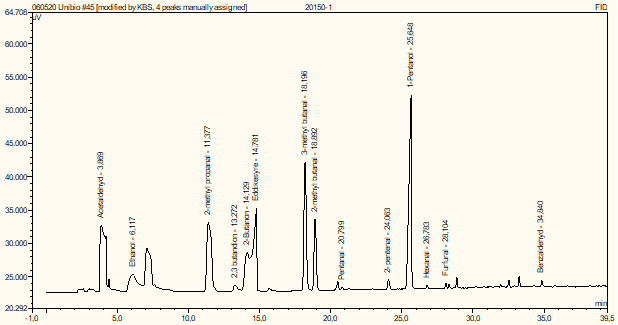Agilent 7697A Headspace Sampler, Agilent 8890C GC, samt Agilent 5977B GC/MSD med EI ionkilde.
GC / MS headspace is a powerful analytical technique that makes it possible to identify and quantify volatile organic compounds (VOCs) from solid or liquid matrices.
The technique can be used for many commercial tasks within food analyzes, shelf life tests / oxidation studies, flavor analyzes, VOC content analyzes of materials and packaging and analysis of chemical and pharmaceutical samples etc.


The sample is comminuted and transferred to a glass vial, which is sealed with a Teflon septum and placed in auto-sampler for the gas chromatograph. From there, the sample is moved to the headspace oven and heated, after which a volume of headspace is taken from the gas phase, which is passed on the GC column and through a gas chromatograph with MS detector. The method is based on the distribution of volatiles in the headspace being in equilibrium with the volatiles in the sample.

The MS detector has a significantly better detection limit compared to the FID detector, and a fast and secure identification of the separated components is achieved. The detection limit can be further improved by running in target mode / SIM mode (selective ion targeting mode), whereby DL for individual components is improved by 100 - 1000 times compared to FID. Furthermore, poor chromatography (co-variance / overlapping peaks) can often be saved by letting MS detectors search for specific ion fragments.
